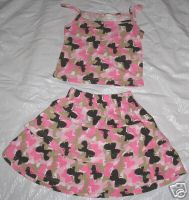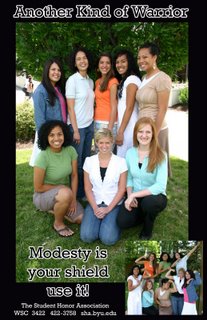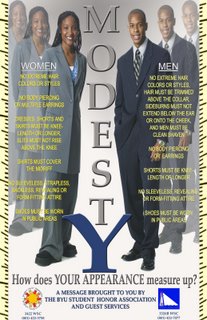[youtube]http://www.youtube.com/watch?v=sbcmPe0z3Sc[/youtube] While this video is more activist-y than scholarly, I think it might be useful as a way to demonstrate that our taken-for-granted categories (whether they be based on religion, race, ethnicity, gender or otherwise) are falsely homogeneous.
clothes/fashion
Here is a link to a website sponsored by Tampax and Always about their work with the UN to give pads to girls in Africa, supposedly because these girls miss school each month because they don’t have pads to wear.
Here is a t-shirt you can buy to support the program. It says “Use your period for good”:
 The t-shirt costs $21.99. Of this, $1 goes toward the program.
The t-shirt costs $21.99. Of this, $1 goes toward the program.
This brings up all kinds of issues–for instance, where does the other $20.99 go? To Tampax and Always? What do these companies stand to gain from this? Positive publicity or lifelong customer loyalty in Africa?
It could also be used as part of a discussion about consumption and activism–the idea we have now that you can just buy something if you want to fix a social problem. If you pick up any fashion magazine, there will be a page or an article in it telling readers they can change the world by buying some product–nevermind that only a tiny part of the purchase price goes to the charity.
For other examples of shopping as activism, look here, here, and here.
Pink camo + Dora the Explorer = cutesy toughness for little girls.

Pink camo + vinyl pants = sexy.


Special edition Hard Rock Barbie with pink camo punk-ish outfit and guitar. This could also be used as an example of the commodification of countercultures.

This print, on a girls’ outfit, is called “butterfly camo.” Note the spots are butterfly-shaped.

Did you know there’s a website with tons of pink camo clothing?
Funky Frum: Aimed at conservative Jews
Marabo: For Muslim women
Modest by Design: Formal wear; tagline is “Clothing your father would approve of.”
Shade: Aimed at Mormons
These could be useful in all kinds of ways–for instance, is it necessarily oppressive to dress “modestly”? Is there a difference in the tone of these websites (i.e., providing choice vs. “clothing your father would approve of”)? Do we view the website aimed at Muslim women differently than the others?
Yan sent me this link to the Brigham Young University dress code. Here are some examples:
One of the things I think is really interesting is how aggressively multicultural the posters are. The Mormon church did not allow black men to be priests (and therefore they could not ascend to the highest level of heaven) until 1978.
Thanks Yan!

Borrowed from Grad Student Madness.
Here is a link to a website sponsored by Tampax and Always about their work with the UN to give pads to girls in Africa, supposedly because these girls miss school each month because they don’t have pads to wear.
Here is a t-shirt you can buy to support the program. It says “Use your period for good”:
 The t-shirt costs $21.99. Of this, $1 goes toward the program.
The t-shirt costs $21.99. Of this, $1 goes toward the program.
This brings up all kinds of issues–for instance, where does the other $20.99 go? To Tampax and Always? What do these companies stand to gain from this? Positive publicity or lifelong customer loyalty in Africa?
It could also be used as part of a discussion about consumption and activism–the idea we have now that you can just buy something if you want to fix a social problem. If you pick up any fashion magazine, there will be a page or an article in it telling readers they can change the world by buying some product–nevermind that only a tiny part of the purchase price goes to the charity.
For other examples of shopping as activism, look here, here, and here.
Pink camo + Dora the Explorer = cutesy toughness for little girls.

Pink camo + vinyl pants = sexy.


Special edition Hard Rock Barbie with pink camo punk-ish outfit and guitar. This could also be used as an example of the commodification of countercultures.

This print, on a girls’ outfit, is called “butterfly camo.” Note the spots are butterfly-shaped.
Did you know there’s a website with tons of pink camo clothing?
Funky Frum: Aimed at conservative Jews
Marabo: For Muslim women
Modest by Design: Formal wear; tagline is “Clothing your father would approve of.”
Shade: Aimed at Mormons
These could be useful in all kinds of ways–for instance, is it necessarily oppressive to dress “modestly”? Is there a difference in the tone of these websites (i.e., providing choice vs. “clothing your father would approve of”)? Do we view the website aimed at Muslim women differently than the others?
Yan sent me this link to the Brigham Young University dress code. Here are some examples:
One of the things I think is really interesting is how aggressively multicultural the posters are. The Mormon church did not allow black men to be priests (and therefore they could not ascend to the highest level of heaven) until 1978.
Thanks Yan!

Borrowed from Grad Student Madness.














